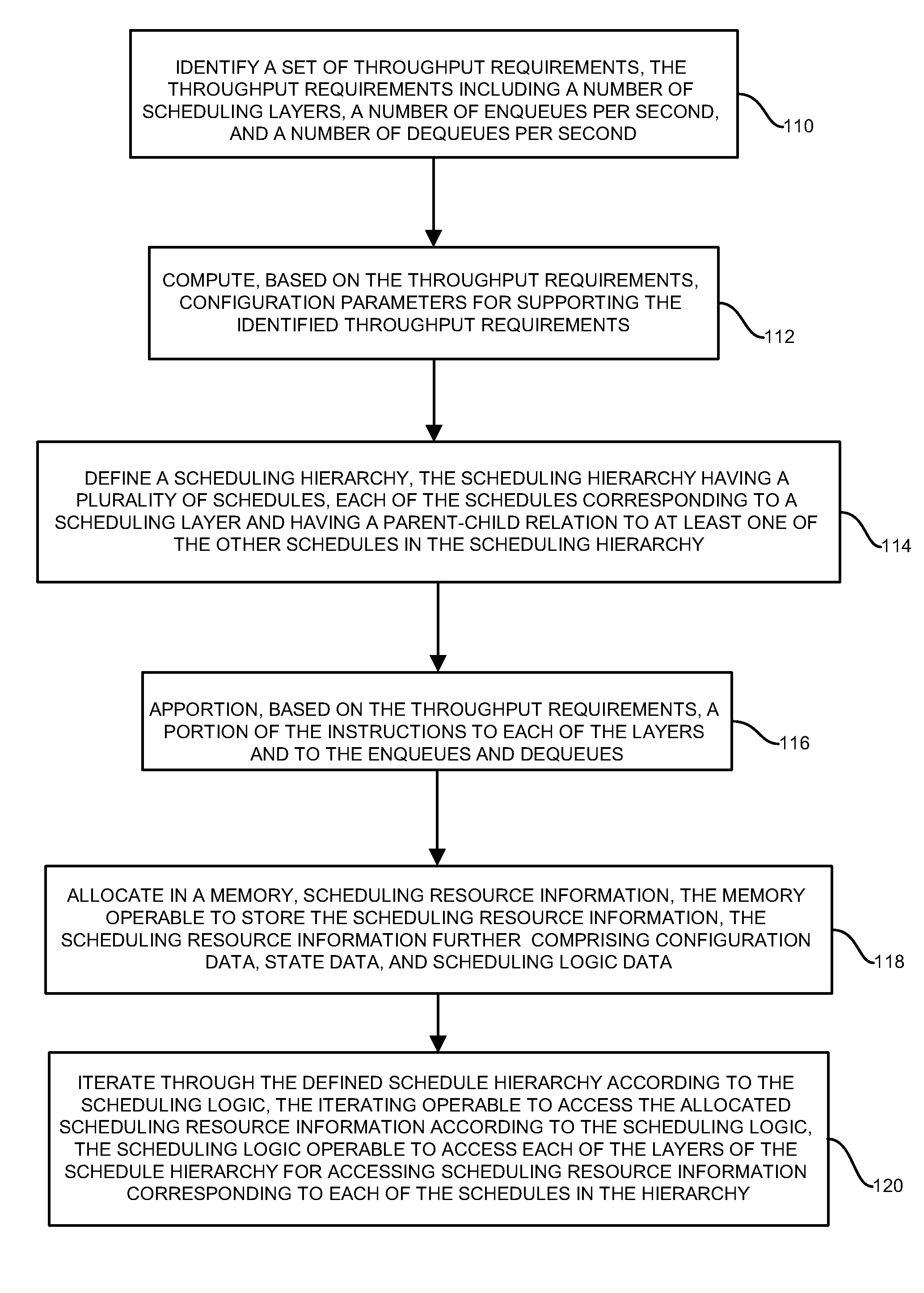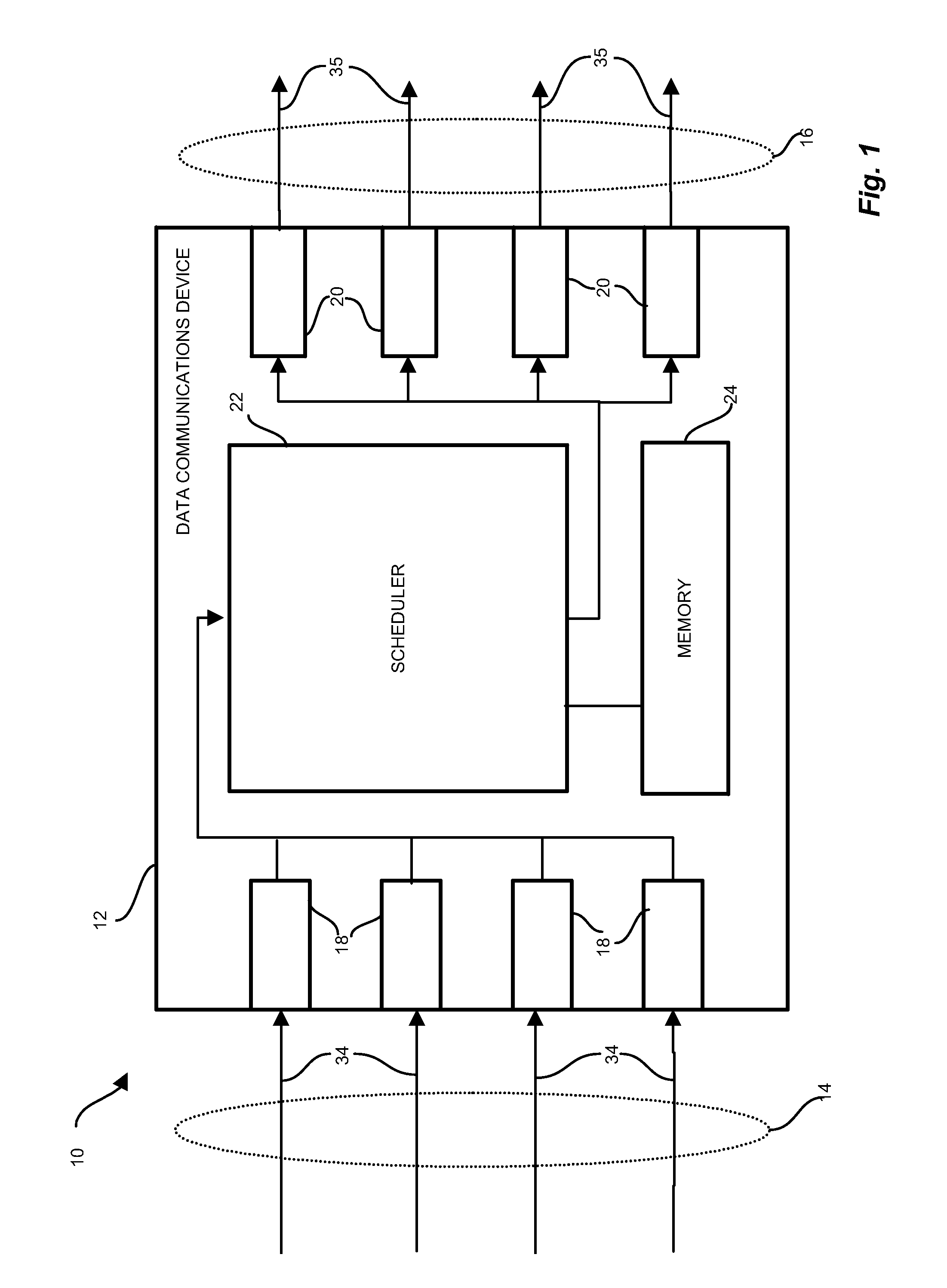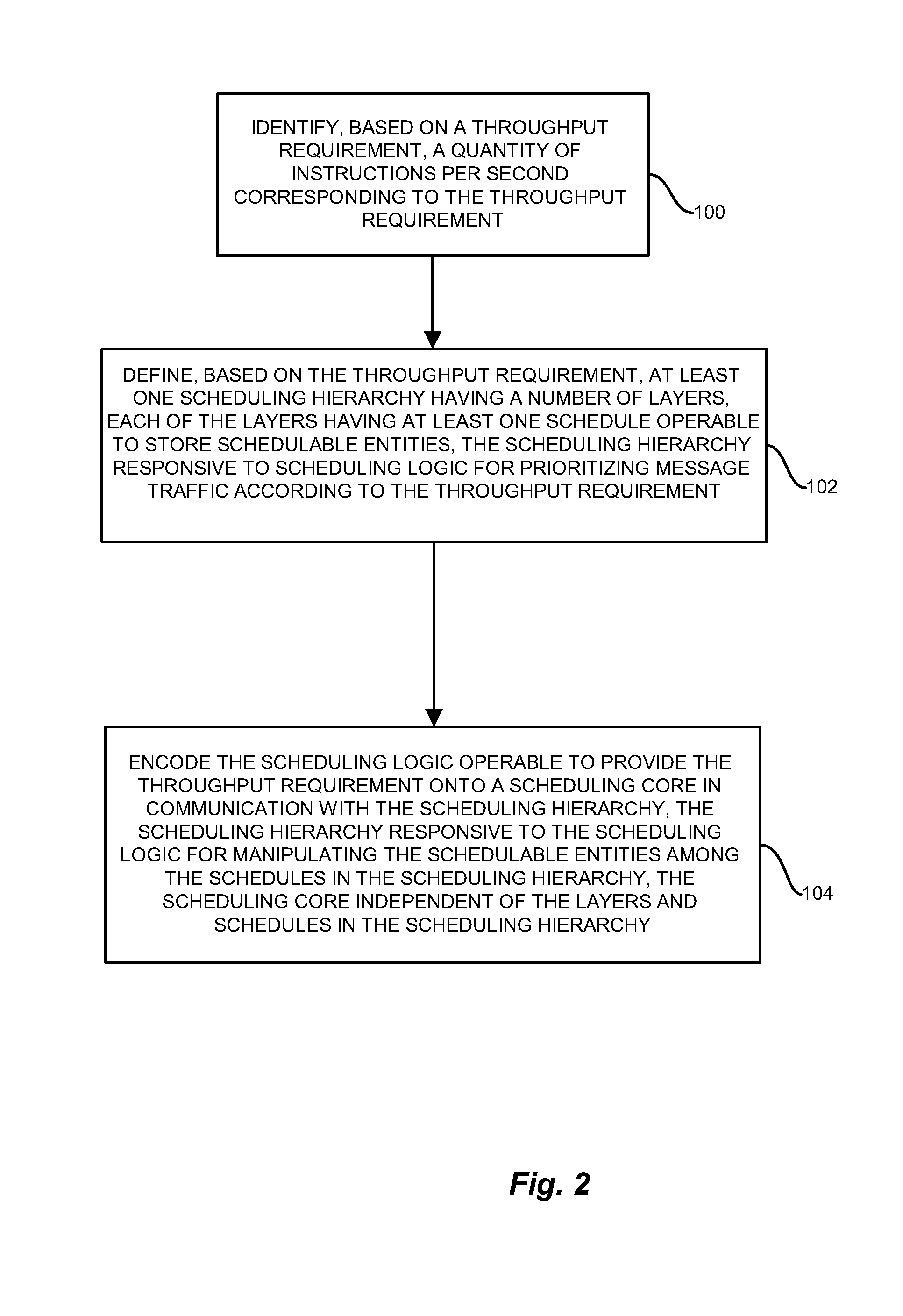Iterative architecture for hierarchical scheduling
a hierarchical scheduling and scheduling technology, applied in the field of hierarchical scheduling, can solve the problems of excessive or unrestrained use of increase the cost of resulting data communications devices, and high cost of conventional high-speed memory and processing circuits in schedulers, and achieve the effect of facilitating traversal
- Summary
- Abstract
- Description
- Claims
- Application Information
AI Technical Summary
Benefits of technology
Problems solved by technology
Method used
Image
Examples
Embodiment Construction
[0031]The present invention substantially overcomes the problems discussed above with respect to scheduler design constraints by a defining an iterative, generic scheduling engine applicable to an arbitrary scheduling hierarchy structure having a variable number of hierarchy layers. The generic scheduling engine, as defined by the present claims, is operable to receive a scheduling tree configuration, define a scheduling hierarchy structure having a predetermined number of layers, and which has allocated to it, in response to design constraints and processing considerations, scheduling resources such as a number of instructions per second, and a predetermined area of high-speed scheduler memory, according to predetermined scheduling logic, as a result of the design constraints. The resulting scheduling logic is operable to process the scheduling hierarchy in an iterative manner according to the allocated available resources, such as instructions per second, among the layers of the h...
PUM
 Login to View More
Login to View More Abstract
Description
Claims
Application Information
 Login to View More
Login to View More - R&D
- Intellectual Property
- Life Sciences
- Materials
- Tech Scout
- Unparalleled Data Quality
- Higher Quality Content
- 60% Fewer Hallucinations
Browse by: Latest US Patents, China's latest patents, Technical Efficacy Thesaurus, Application Domain, Technology Topic, Popular Technical Reports.
© 2025 PatSnap. All rights reserved.Legal|Privacy policy|Modern Slavery Act Transparency Statement|Sitemap|About US| Contact US: help@patsnap.com



